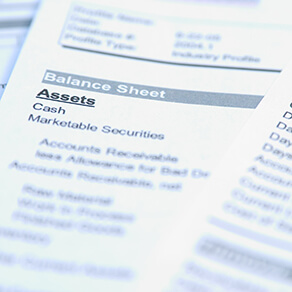
Upgrading Financial Statements to a Classified Balance Sheet
The three major parts of a company’s financial statements are generally regarded to be the balance sheet, the income statement and the statement of cash flows. One way a construction business can improve its financial reporting is to upgrade its balance sheet from a conventional one to a classified balance sheet.
Current vs. Noncurrent
Unlike a typical balance sheet, a classified balance sheet distinguishes current assets and current liabilities from other — that is, noncurrent — assets and liabilities. This approach is particularly well-suited to construction companies because of the project-by-project nature of their operations. The general criteria for separating current and noncurrent items are, first, a company’s operating cycle. This is traditionally defined as the time needed to convert cash into materials and services, and then into products, which are then sold to create receivables. Finally, these receivables are converted through collections back into cash. A construction company’s operating cycle may work a little differently at first from other types of businesses, but it generally ends up in the same place. Another important criterion for separating current items from noncurrent ones is current assets. These are cash and other items that are reasonably expected to be realized in cash or sold or consumed during one year or within the company’s normal operating cycle if it’s longer than a year. Current liabilities are a factor as well. These are obligations whose liquidation is reasonably expected to require the use of current assets or the creation of other current liabilities.
Although construction companies often have contracts of varying duration, the normal operating cycle is measured by the average time between the inception of a contract and its completion. When determining a normal operating cycle, using estimated time remaining to complete contracts is typically inaccurate.
Why To Classify
The contracts of most small construction businesses can generally be completed in one year or less. Although a company such as this may present an unclassified balance sheet, a classified one will give financial statement users, such as lenders and sureties, a much more detailed and clearer picture of the business. For example, if some assets and liabilities are classified as noncurrent because the related contracts have terms of greater than one year, information about their realization and maturity can be disclosed.
In most other industries, an unclassified balance sheet is preferable when the operating cycle exceeds one year. Certain construction companies may use this approach, but the preferable practice is to classify contract-related assets and liabilities as current based on the operating cycle concept and to classify other assets and liabilities as noncurrent. (Amounts expected to be realized or liquidated during the year would still be classified as current.)
Major Transformation
For construction companies, contracts represent a primary source of assets and liabilities. Accounting for these two elements changed significantly when the Financial Accounting Standards Board rolled out Accounting Standards Codification Topic 606 (ASC 606), Revenue from Contracts with Customers.
According to ASC 606, a contract asset is defined as an entity’s right to consideration in exchange for goods or services transferred to a customer when that right is conditioned on something other than the passage of time. Meanwhile, a contract liability is defined as an entity’s obligation to transfer goods or services to a customer for which the entity has received consideration (or the amount is due) from the customer.
For instance, unbilled contract receivables that are conditioned on a basis other than the passage of time are now considered contract assets. The same holds true for costs and estimated earnings in excess of billings. Transparency and thoroughness Although it’s a little more work, a classified balance sheet reflects well on the transparency and thoroughness of a construction company. For help setting up and maintaining a classified balance sheet, contact your CPA.
Transparency and Thoroughness
Although it’s a little more work, a classified balance sheet reflects well on the transparency and thoroughness of a construction company. For help setting up and maintaining a classified balance sheet, contact us or your CPA.
